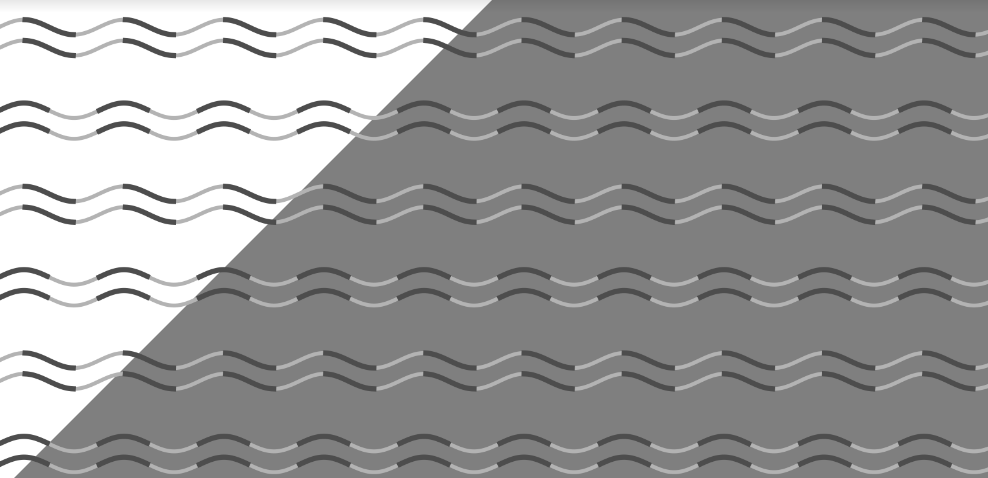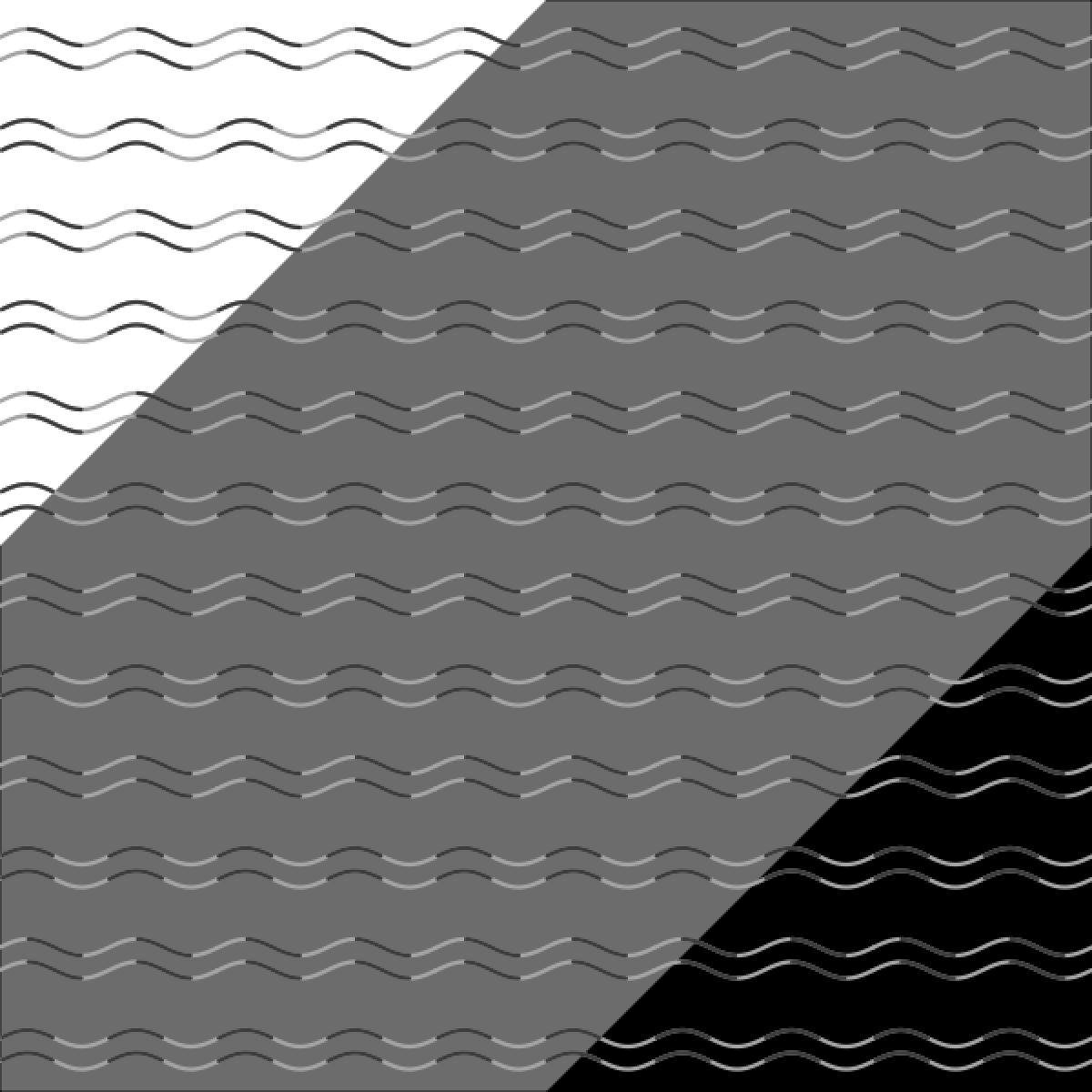
Just when you think you've seen it all, a researcher from Japan identified a new type of optical illusion, and it's sure to blow your mind. The illusion is called curvature blindness and is outlined in a new study published online in Iperception.
Despite what you may think, all of the lines in the image are the same shape—a soft, round curve. However, when seen against a gray background, sometimes the bends appear to be a sharp zigzag. Specifically, this occurs when the lines have a dark line that runs from top to bottom (crest to trough). According to study researcher Kohske Takahashi, a psychologist at Chukyo University, Japan, this is the first time anyone has identified this particular illusion, to the best of his knowledge, Indy 100 reported.
It's not clear why the brain perceives the lines this way, although Takahashi proposes in his research that it may be due to a conflict between the underlying brain mechanisms for identifying gentle curve perception and obtuse corner perception. When the brain is unclear as to whether it is looking at a curve or an angle, then it may default to seeing bends as corners, Discover Magazine reported.
Related: Human brains are able to predict the future before the eye can tell it what happened
What's intriguing about the illusion is its strength. Where some illusions take time to see, and are not easily observable to everyone, the effect in this image appears universal.
"As the effect magnitudes are quite strong, unless one carefully stares at the region that looks like a corner, it is hard to find that all lines are physically wavy," wrote Takahashi, Discover reported.
Optical illusions are evidence of the often stark differences between reality and perception. These illusions occur when there is some disconnect between what the brain comprehends and what you are actually viewing.
Related: Why we believe in ESP, ghosts, and psychic phenomena
There are different types of optical illusions, which can be broken down into three distinct groups, according to Seeker: literal, physiological and cognitive. In literal illusions, such as the current image, the ambiguity is due to our brain's pattern recognition ability and tendency to fill in details and make educated assumptions when it's not sure what it's looking at. In this case, the brain sees bends as angles when it's not sure what to make of them.
Physiological illusions are based on how certain patterns can trick neurons in the brain, causing temporary blindness, such as this motion-induced blindness illusion. Last, cognitive illusions are based on your brain trying to make sense of what it's seeing and what it's used to seeing. For example, common cognitive illusions such as the Ponzo illusion are based on the brain's tendency to perceive two-dimensional shapes as if they were three-dimensional.
This recent discovery is further proof that there are still many mysteries as to how our brains process information.

Uncommon Knowledge
Newsweek is committed to challenging conventional wisdom and finding connections in the search for common ground.
Newsweek is committed to challenging conventional wisdom and finding connections in the search for common ground.
About the writer
To read how Newsweek uses AI as a newsroom tool, Click here.








